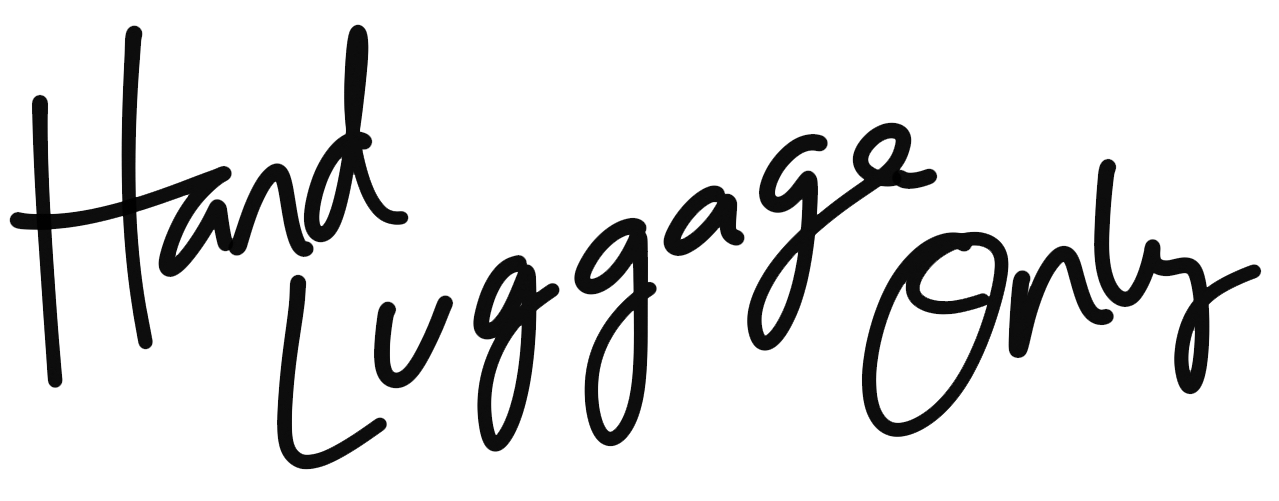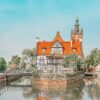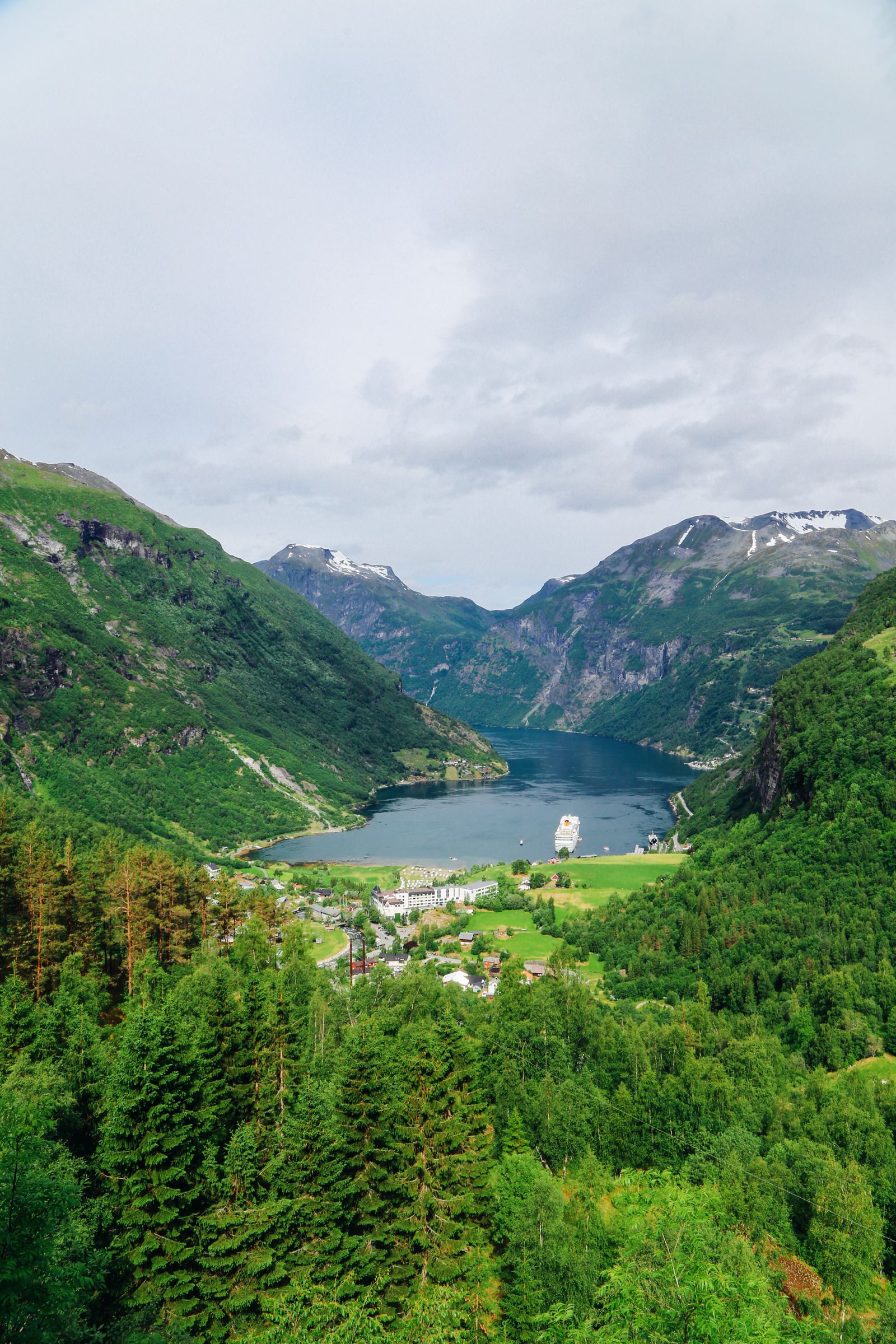The Northern Lights, also called the Aurora Borealis, are perhaps almost single-handedly to blame for my obsession with visiting cold countries.
Don’t get me wrong, coming from the UK, where it’s never really cold enough and never really hot enough (not for too long anyway), the scenery in so many cold destinations is nothing short of mind-boggling.
Glaciers that are thousands of years old, dramatic mountains carved by said glaciers, wildlife that’s unlike anywhere else in the world, the seemingly contradictory mix of volcano and snow… I really could go on and on – point is, the Northern Lights are usually found in some of the most stunning destinations in the world!
How Are The Northern Lights Formed?
The best explanation I can give you is that it has to do with activity from the sun.
See, around the sun, you have charged-particles (yes, I guess charged in the same way electricity charges stuff – these particles actually carry energy); said particles, due to their new-found ‘energy’ can escape the gravity of the sun and head towards earth (also called ‘solar wind’).
Once these particles hit earth’s atmosphere (the earth has 5 atmospheric layers), the particles lose their charge. Now, energy can neither be created nor destroyed; rather, it transforms from one form to another (one of the most basic facts of physics I still remember from school). The charge these particles from the sun ‘lose‘ 😉 , is transferred to the particles in the earth’s atmosphere which emit a light due to their new-found charge.
Effectively, the sun transfers power from itself to the earth to create the Northern Lights. The colour you see, depends on the elements in the atmosphere involved in this reaction. Oxygen (the more common one) is usually green or orange/red and Nitrogen is usually blue or red.
Why does this happen at really high places in the world? Don’t ask – we’ll be here all evening if I tried to tackle that one. Just kidding! The reason is simple enough – those solar charged particles are usually deflected by the earth’s magnetic field but the magnetic field is weakest at the North and South poles of the earth so these particles can enter the atmosphere a lot easier at these points. (Though the lights down South – in places like New Zealand – are called the “Southern Lights” not the “Northern Lights” for fairly obvious reasons and can usually be seen closer to the horizon instead of high in the skies like the Northern Lights).
When Should You Go To See The Northern Lights?
The best time of the year to go is September till April! This is not to say it doesn’t occur outside of these months, it’s just that the destinations that are great for seeing the Northern Lights are also the ones that get the midnight sun in summer so it’s impossible to see them even when they occur in the summer months.
Where To See The Northern Lights?
Okay, enough boring sciency bits – lets’ get to the juicy stuff – where should you travel to so you can actually get to see the Northern Lights?
Now, you can actually see the Northern Lights as far south as England, but this is definitely a huge exception to the rule! (It rarely every happens!) If you’re going to spend money to see the Northern Lights, you wanna head to a place that is not only pretty much guaranteed, but also one where the display is bright and dazzling.
To that end, here are 10 places across the world where you should head to, to see the amazing Northern Lights!
(*Don’t forget to check out the Northern Lights forecast on the website here too!)
1.) Kakslauttanen, Finland
Chances are you’ve seen images of Kakslauttanen floating around the internet somewhere. Yes, this is the home of the glass-ceiling’ed igloos you’ve seen on Pinterest, and it’s arguably one of the cosiest way to view the Northern Lights. Luxury and life-altering experiences of natural beauty — what a combination!
2.) Reykjavik, Iceland



Reykjavik is by and large one of the most popular destinations when it comes to chasing the Northern Lights but as expensive as Iceland can be, seeing the Northern Lights here is a lot cheaper than most people think.
For starters, you can’t actually see the Northern Lights in Reykjavik – you have to drive out of the city to places with very little or no lights. This, coupled with the fact that Iceland is very safe means you can hire a car and just drive out of the city to see the Northern Lights.
We did this this first time we saw the Northern Lights. The second time, we ventured out further than Reykjavik. The third time was actually on a flight on the way home from Reykjavik. The 4th, 5th, 6th, 7th, 8th times happened in one the locations down below…
And remember, even if the Lights don’t put in an appearance, you can enjoy the country’s famous geysers, blue ice, and rugged volcanic landscapes. See more on things to do in Iceland in our posts here and here.
3.) Svalbard, Norway
Svalbard is pretty much as north as you can get without floating off into Arctic Ocean. The period between mid-November and the end of January (known as the Polar Night) is the best time to visit. As Svalbard is completely without daylight during this time, your chances of catching a glimpse of the Northern Lights are so much higher. (You do have to bear in mind that having almost 24 hours of night time might mean you don’t have much to do in the day so September to November and January to April might be better times to visit).
Unlike Iceland, Svalbard does have polar bears so don’t just go wandering on your own to see the Northern Lights! Always do this with a local guide.
4.) Tromso, Norway
Tromso was our very first experience of visiting the Arctic Circle and also the place I mentioned above where we saw the Northern Lights the 4th, 5th, 6th, 7th, 8th and probably 9th time too! Seriously, every night we were there, the Northern Lights were out.
Some nights were brighter and longer than others of course but every single night had at least a show of the Northern Lights. Talk about being spoilt rotten, eh? Best part, there’s so much more to do here besides the Northern Lights (a lot of which will be coming up in a blog post very soon) and so you have so many reasons to have to visit Tromso!


Also, Tromso doesn’t have polar bears like Svalbard does so you’re okay to head out on your own to see the Northern Lights! (To be honest, we rocked up to our balcony and to a beach outside our hotel to see them on two of the nights we were here).
5.) Jukkasjärvi, Sweden
You might have seen Sweden’s famous Ice Hotel in the media; well, Jukkasjärvi is the home of this man-made wonder, and it’s a great base for searching out the Northern Lights. If forking out for a night in the Ice Hotel is a bit of a stretch, there are plenty of other (warmer 😉 ) accommodation options available in this picturesque village.
See more about staying in the Ice Hotel in our post here.
6.) Northern Canada
Okay, this is a pretty big area (Canada is the 2nd biggest country in the world after all), but it’s all good ground for light-spotting since the ‘Aurora Oval’ covers most of the country.
There’s a high chance of seeing the Northern Lights in Canada, particularly in the north of British Columbia, Yukon, Nova Scotia, Newfoundland, Northern Saskatchewan, and the Northwest Territories.
7.) Greenland
Greenland (probably the least visited of the lot on here) has a number of Aurora ‘hot spots’ worth trying without venturing too far from the cities and town as light pollution across the country is relatively low.



The country’s most popular destinations for Aurora Hunting include Kangerlussuaq, Sisimiut, and the Ilulissat Icefjord, a UNESCO Heritage site.
Read more: Best places in Greenland to visit
8.) The Faroe Islands
If you’re looking for dramatic sights, look no further than The Faroe Islands! We’re talking gigantic lakes set atop mountains, waterfalls that intrigue and surprise, jagged mountain cliffs (which somehow the sheep are able to navigate quite easily) and more beautiful puffins than you can shake a stick at (though I am not sure why you’d wanna shake a stick at those cute birds).


The Faroe Islands are also very safe to visit (people will literally invite you into their homes—it’s that friendly). They’re also fairly sparsely populated, so you’re less likely to be disturbed by light pollution and can hence see the Northern Lights not too far from the comfort of your bedroom on the islands.
See more from about visiting the Faroe Islands in our post here.
9.) Scotland, UK
It might not be in Scandinavia or even particularly close to the Arctic Circle, but Scotland deserves its unexpected place on the list based on the incredible Northern lights show visitors and locals to the country have observed in recent years.
In particular, Caithness (in the north) has proven itself one of the best places to catch the lights. A huge plus is that it can prove to be a very cheap option for any British Aurora hunters or visitors who already happen to be in the UK and want to explore some of Scotland’s absolutely beautiful scenery.
10.) Fairbanks, Alaska
There are so many places across Alaska where you stand a decent chance of seeing the Northern Lights but for the best chance of seeing the Northern Lights in Alaska, you should head to the city of Fairbanks in Alaska.
This is also where the Geophysical Institute at the University of Alaska is based and they’re the ones who do some of the best predictions of the Northern Lights across the globe! (Seriously, we’ve seen them 9 times now and have the institute’s predictions have been pretty spot on every time). Check out the Geophysical Institute at the University of Alaska’s Northern Lights forecast website here.
Check Out The Very Best Of Great Britain!


































